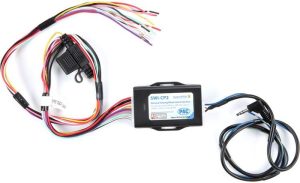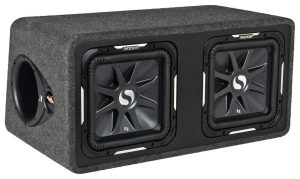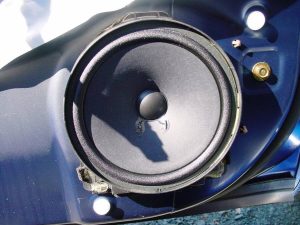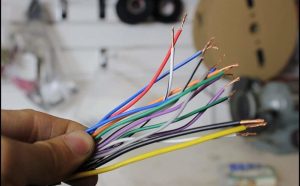In the ever-evolving landscape of car audio systems, upgrading to an aftermarket stereo is a popular choice for those seeking enhanced features and audio quality. One common concern among car enthusiasts contemplating this upgrade is the compatibility of their steering wheel controls (SWC) with the new stereo system. In this comprehensive guide, we’ll explore the ins and outs of using steering wheel controls with an aftermarket stereo, addressing key questions and providing valuable insights.
Contents
- Understanding Steering Wheel Controls (SWC)
- Compatibility of Aftermarket Stereos with Steering Wheel Controls
- How to Check SWC Compatibility
- Common Challenges and Solutions
- Popular Aftermarket Stereo Brands Supporting SWC
- Step-by-Step Guide for SWC Integration
- Benefits of Using Steering Wheel Controls with Aftermarket Stereos
- Conclusion
Understanding Steering Wheel Controls (SWC)
A. What are steering wheel controls?
Steering wheel controls, often referred to as SWC, are buttons or switches integrated into the steering wheel of a vehicle. These controls allow drivers to manipulate various audio and vehicle functions without taking their hands off the wheel. Common functions include adjusting volume, changing tracks, managing radio presets, and activating voice commands.

B. Functions of SWC
The functions of steering wheel controls may vary depending on the vehicle’s make and model. However, the primary controls typically include volume adjustment, track or station selection, mode switching (e.g., from radio to CD player), and voice command activation. These controls contribute to a safer and more convenient driving experience.
C. Integration of SWC with factory stereos
SWC integration with factory-installed stereos is a standard feature in many modern vehicles. Automakers design their systems to seamlessly incorporate these controls, ensuring a user-friendly interface. However, when considering an aftermarket stereo, compatibility concerns may arise.
Compatibility of Aftermarket Stereos with Steering Wheel Controls
A. The evolution of aftermarket stereos
Aftermarket stereos have come a long way from being simple cassette or CD players. Modern units offer advanced features, including touchscreen displays, Bluetooth connectivity, smartphone integration, and enhanced audio processing. Despite these advancements, ensuring compatibility with existing steering wheel controls is crucial for a harmonious integration.
B. Different types of aftermarket stereos available
There are various types of aftermarket stereos, ranging from single-DIN to double-DIN units. Single-DIN units are smaller and typically fit into standard radio slots, while double-DIN units offer larger displays and additional features. The type of stereo you choose can impact the compatibility with your steering wheel controls.
C. Factors affecting compatibility with SWC

Several factors can influence the compatibility of aftermarket stereos with steering wheel controls:
- Vehicle Make and Model: Different vehicles have unique SWC systems, and compatibility varies across makes and models.
- Aftermarket Stereo Brand and Model: Some aftermarket stereo brands prioritize compatibility with a wide range of vehicles, making it easier to find a suitable unit for your car.
- Wiring and Connectors: The wiring and connectors used during the installation play a crucial role. Ensuring a secure and proper connection is essential for SWC functionality.
How to Check SWC Compatibility
A. Researching the aftermarket stereo model
Before making a purchase, research the specifications and compatibility features of the aftermarket stereo you’re considering. Most manufacturers provide detailed information about SWC compatibility in the product manuals and on their websites.
B. Checking the vehicle’s compatibility
Refer to your vehicle’s manual or consult the manufacturer to determine the compatibility of your steering wheel controls with aftermarket stereos. Some vehicles may require additional adapters or modules for seamless integration.
C. Consulting the vehicle’s manual or manufacturer
The vehicle’s manual often contains information about the SWC system and any specific requirements for aftermarket stereo integration. Additionally, contacting the vehicle manufacturer’s customer support can provide valuable insights and recommendations.
Common Challenges and Solutions
A. Issues with SWC not working after installation
If your steering wheel controls fail to work after installing an aftermarket stereo, consider the following troubleshooting steps:
- Check Connections: Ensure all wiring and connectors are properly secured and connected according to the stereo and vehicle-specific instructions.
- Compatibility Modules: Invest in compatibility modules designed to bridge the gap between your vehicle’s SWC system and the aftermarket stereo.
- Professional Installation: If challenges persist, seek professional help for a thorough installation and troubleshooting process.
B. Adapters and modules for SWC integration
To address compatibility issues, various adapters and modules are available in the market. These devices act as intermediaries, facilitating communication between the steering wheel controls and the aftermarket stereo. Popular brands such as PAC Audio, Metra, and Axxess Interface offer a range of adapters designed for different vehicles and stereo models.
C. Programming aftermarket stereos for SWC compatibility
Many aftermarket stereos come with customizable settings that allow users to program the controls according to their preferences. Refer to the stereo’s user manual for instructions on programming SWC functions. Some units may require additional accessories, like resistors or diodes, for optimal programming.
Popular Aftermarket Stereo Brands Supporting SWC
A. Highlighting brands known for seamless SWC integration
Several aftermarket stereo brands are renowned for their commitment to compatibility and seamless SWC integration. Notable brands include Pioneer, Kenwood, Alpine, Sony, and JVC. These manufacturers often provide detailed information about SWC compatibility for specific vehicle models on their official websites.
B. User reviews and experiences with specific brands
User reviews can offer valuable insights into real-world experiences with aftermarket stereos and their compatibility with steering wheel controls. Platforms like online forums, product review websites, and social media can provide a wealth of information on users’ successes and challenges.
C. Considerations for choosing the right aftermarket stereo
When selecting an aftermarket stereo, consider the following factors:
- SWC Compatibility: Prioritize models explicitly designed to work with your vehicle’s steering wheel controls.
- Features: Choose a stereo that aligns with your desired features, such as Bluetooth connectivity, smartphone integration, and audio processing capabilities.
- Brand Reputation: Opt for reputable brands known for producing reliable and high-quality car audio systems.
Step-by-Step Guide for SWC Integration
A. Preparing the vehicle and aftermarket stereo
- Disconnect the Battery: Ensure safety by disconnecting the vehicle’s battery to avoid electrical issues during installation.
- Remove Existing Stereo: Carefully remove the factory-installed stereo following the vehicle and stereo-specific instructions.
- Prepare Wiring: Identify the wiring harnesses and connectors needed for the aftermarket stereo and SWC integration.
B. Identifying the correct wires and connections
- Consult Manuals: Refer to the vehicle manual, stereo manual, and any additional documentation to identify the correct wires.
- Use Wiring Diagrams: Wiring diagrams specific to your vehicle and stereo model can be invaluable during the installation process.
C. Programming and testing SWC functionality
- Program Controls: Follow the instructions in the stereo’s manual to program the steering wheel controls according to your preferences.
- Test Functionality: After installation, thoroughly test the SWC to ensure all functions work as intended. Make adjustments if necessary.
Benefits of Using Steering Wheel Controls with Aftermarket Stereos
A. Convenience and safety while driving
- Hands-Free Operation: SWC allow drivers to control audio functions without taking their hands off the wheel, promoting safer driving habits.
- Minimized Distractions: With SWC, drivers can focus on the road while still enjoying the convenience of adjusting audio settings.
B. Enhanced driving experience
- Personalized Control: Programming SWC to suit individual preferences enhances the overall driving experience.
- Seamless Integration: When aftermarket stereos integrate seamlessly with SWC, users can enjoy the benefits of modern audio technology without compromising convenience.
C. Preserving the aesthetics of the vehicle’s interior
- Aesthetic Harmony: Aftermarket stereos often come with sleek designs that complement the vehicle’s interior, preserving the overall aesthetic appeal.
- Upgraded Features: Enjoying modern features doesn’t mean sacrificing the cohesive look of the vehicle’s interior when aftermarket stereos seamlessly integrate with existing controls.
Conclusion
In conclusion, the integration of steering wheel controls with an aftermarket stereo is indeed possible and offers numerous advantages. By researching compatibility, choosing the right stereo brand, and following a meticulous installation process, users can enjoy the benefits of modern car audio systems without sacrificing the convenience of steering wheel controls. Should challenges arise, referring to user reviews, seeking professional assistance, and utilizing compatibility modules are effective strategies to ensure a smooth integration process.






